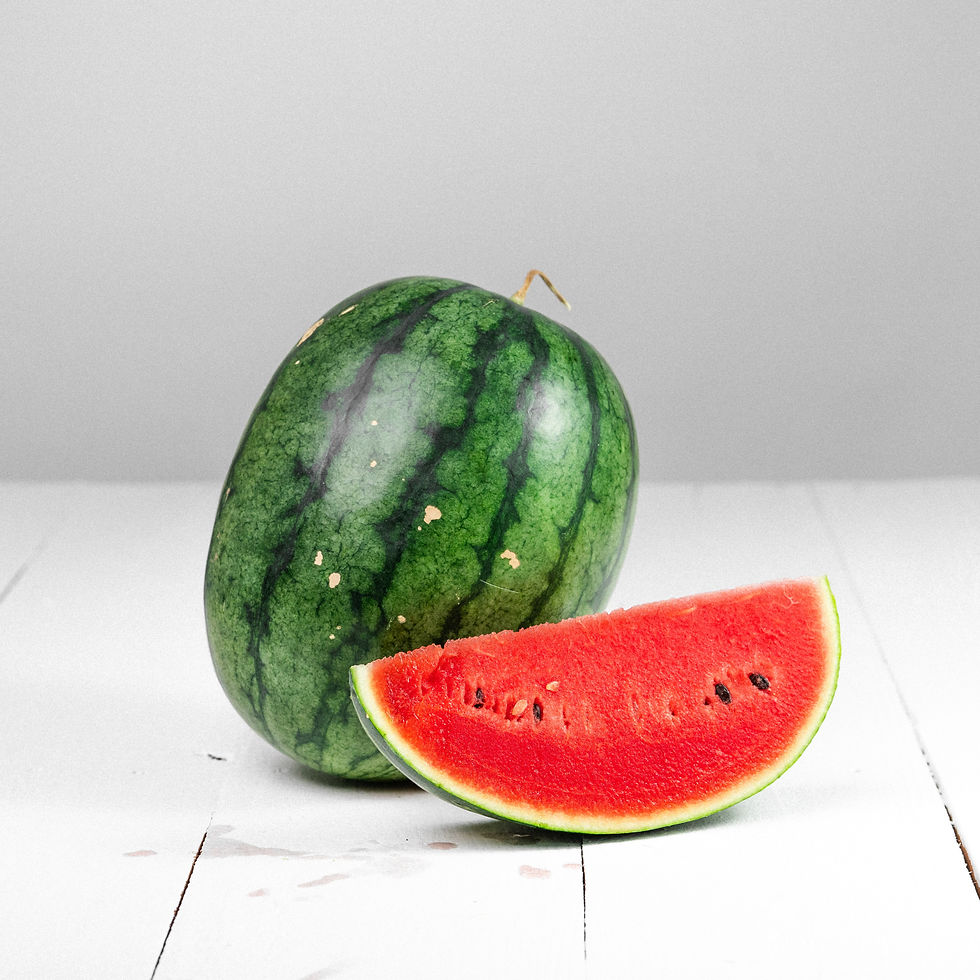Mastering the Art of Growing Juicy Watermelons: A Comprehensive Guide for Beginners
- mygardeningera
- Dec 12, 2023
- 4 min read
Updated: Feb 1, 2024

Starting to grow watermelons is an endeavor that demands attention to detail and strategic planning. Growing these refreshing fruits in your backyard, while not without its challenges, can be a gratifying experience, especially for those who are relatively new to gardening. In this detailed guide, we will break down the ins and outs of growing watermelon, offering a meticulous blueprint to transform your garden into a space where watermelons thrive.
Selecting the Right Variety
When choosing a watermelon variety, take into account the available space in your garden. Compact or bush varieties work well for smaller gardens or containers. Consider your preference for seedless varieties, known for fuss-free snacking, or traditional varieties with seeds, which might add a nostalgic touch to your summer treat. Additionally, consider the climate compatibility of different varieties; some are adaptable to various climates, while others thrive specifically in warmer regions.
Consider Your Space:
Compact or bush varieties like 'Sugar Baby' or 'Bush Sugar Baby' are ideal for smaller gardens. These smaller vines take up less space, making them suitable for containers or limited garden plots.
Seedless or Seeded:
Seedless watermelons, such as 'Crimson Sweet' or 'Sugar Baby,' are convenient for fuss-free snacking. Traditional varieties like 'Charleston Gray' or 'Black Diamond' carry seeds, adding a nostalgic touch and, for some, enhancing the ritual of enjoying this summer treat.
Climate Compatibility:
Different watermelon varieties thrive in specific temperature and humidity ranges. For example, 'Moon and Stars' is known for its adaptability to various climates, while 'Orangeglo' excels in warmer regions.
Ideal Growing Conditions
Creating the optimal environment for watermelon cultivation involves understanding key factors for robust growth and flavorful fruit development. These elements collectively set the stage for a successful watermelon harvest, ensuring the plants thrive and produce delicious, juicy fruits.
Sunlight Requirements:
Watermelons are sun worshippers. Choose a planting location that receives a minimum of 8 hours of direct sunlight daily for optimal growth and the development of sweet, succulent fruit.
Well-Drained Soil:
The key to healthy watermelon plants is well-drained soil. Sandy loam is the preferred choice, allowing for adequate root development and preventing waterlogging.
Soil Preparation:
Enrich the soil with organic matter before planting. Compost is an excellent choice, enhancing soil fertility and water retention.
The Planting Process
Effective watermelon planting necessitates precise timing, ensuring proper spacing, and proper planting depth to establish favorable conditions for robust growth and a bountiful harvest.
Timing is Crucial:
Wait until the threat of frost has passed and soil temperatures reach at least 70°F (21°C) before planting. This ensures a warm and welcoming environment for your watermelon seeds or seedlings.
Spacing Matters:
Provide ample space for your watermelon vines. Plant seeds or seedlings about 2 to 3 feet apart in rows, allowing for proper air circulation and preventing overcrowding.
Planting Depth:
Plant watermelon seeds at a depth of 1 inch. Later thin seedlings to ensure the healthiest and most robust plants.
Watering Wisdom
Watermelons demand consistent moisture throughout their growing period, particularly during dry spells and when the fruit is setting, as maintaining optimal hydration is crucial for the development of plump and juicy melons. Implementing a regular watering schedule and ensuring well-drained soil contributes significantly to the overall health and productivity of watermelon plants.
Consistent Moisture:
Aim for a weekly water supply of 1 to 2 inches.
Drip Irrigation:
Consider employing drip irrigation to maintain soil moisture without wetting the foliage. Wet foliage can be a breeding ground for diseases.

Feeding the Vines
For balanced fertilization, start with a well-rounded fertilizer as the watermelon plants begin to vine, and follow up with another application when the first fruits emerge. While nitrogen is essential for healthy plant growth, it's crucial to moderate its use to avoid excessive lush foliage development at the expense of proper fruit maturation. Striking the right balance in fertilizer application ensures optimal conditions for both foliage and fruit development in watermelon plants.
Supporting Your Vines
Incorporate vertical gardening techniques to train watermelon vines upward, not only saving space but also promoting better air circulation for the plants. Additionally, support growing watermelons with slings made from old pantyhose or fabric. This practice prevents undue stress on the vines and ensures even fruit development, contributing to healthier and more robust watermelon plants.
Pest and Disease Management
Implement effective pest and disease management strategies for your watermelon plants. Utilize companion planting techniques by integrating herbs like basil or marigolds, which naturally deter common pests, reducing the reliance on chemical interventions. Vigilance is crucial; consistently inspect your plants for early signs of pests, such as aphids or cucumber beetles. Early detection enables swift and effective action to protect your watermelon crop.
Harvesting Know-How
Observe ripeness by checking for a brown tendril nearest the fruit and a dull underside, indicating that the fruit is ready for harvest. Additionally, timing matters; opt for morning harvests when temperatures are cooler to preserve the sweetness and flavor of the fruit. Following these guidelines ensures you enjoy perfectly ripe and delicious watermelons from your garden.

Growing watermelons isn't just about gardening; it's a path to enjoying sweet fruits in the summer sun. By following these simple tips, you're not just growing watermelons; you're creating a place filled with plump, juicy delights that will be the highlight of your garden and summer celebrations. So, get ready, dig into the soil, and let the adventure of growing your watermelon patch begin in your own backyard!

Comments